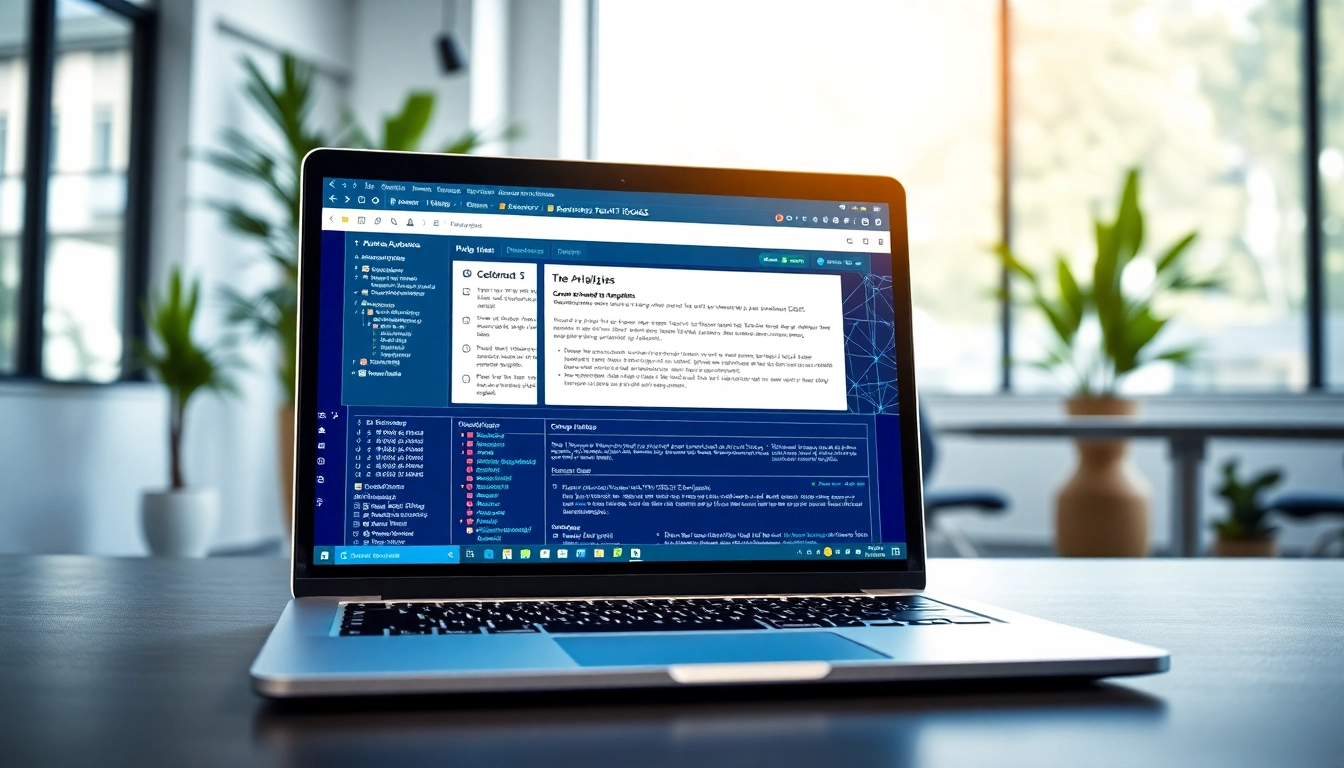Stay Ahead in Global Real Estate with International Property Alerts

Understanding International Property Alerts
What Are International Property Alerts?
International property alerts are email notifications or system messages that inform real estate investors and potential buyers about new listings, price changes, or relevant market data for properties that meet their specific criteria. This system is designed to facilitate informed decision-making in the global real estate market by delivering timely and pertinent information directly to users, thereby allowing them to act quickly on opportunities that align with their investment strategies.
The use of International property alerts provides a streamlined approach to navigating the often complex landscape of international real estate, enabling users to be proactive rather than reactive. By subscribing to these alerts, individuals gain access to curated property listings from around the world, tailored to their unique preferences such as location, budget, and property type.
The Benefits of International Property Alerts
Utilizing international property alerts presents several advantages for investors:
- Timeliness: Property markets can shift rapidly; being informed about new listings in real-time can make the difference between securing a prime investment and missing out.
- Customization: Users can set specific parameters, ensuring they only receive alerts for properties that meet their distinct needs, which reduces information overload.
- Market Insights: Alerts often include trends and updates relevant to the selected regions, allowing investors to make data-driven decisions supported by accurate market analysis.
- Networking Opportunities: Many platforms connect users with real estate professionals and other investors, fostering a community that can share insights and experiences.
How to Use International Property Alerts Effectively
Maximizing the potential of international property alerts involves strategic setup and active engagement:
- Define Your Objectives: Clearly outline what you hope to achieve with international property alerts. This could range from investment opportunities to personal vacation homes.
- Set Comprehensive Preferences: Customize your alerts to target specific geographic areas, property types, price ranges, and more, so you receive highly relevant information.
- Engage Regularly: Regularly check for new listings and market insights, and adjust your alert preferences as your needs evolve.
- Follow Up Promptly: When you receive an alert that meets your criteria, act quickly to schedule viewings or request more information, as desirable properties may not remain on the market for long.
Key Features of International Property Alerts
Real-Time Notifications About Properties
One of the standout features of international property alerts is their ability to provide real-time notifications. For investors who are predominantly focused on international markets, this function alleviates the anxiety associated with missing out on critical opportunities. When a new property is listed or a significant price change occurs, alerts are sent directly to the user, often within minutes of the change occurring. This speed can be crucial, enabling users to position themselves ahead of other buyers in competitive markets.
Customizable Search Preferences
Customizable search preferences allow users to fine-tune their alerts to match their exact requirements, enhancing the relevance of information received. This flexibility can relate to various criteria, such as:
- Location: Choose specific countries, regions, or even neighborhoods.
- Property Type: Filter based on residential versus commercial properties, or more specific types like luxury villas, apartments, or investment properties.
- Price Range: Set a minimum and maximum budget that aligns with your financial capabilities and investment goals.
This feature is particularly valuable in international markets where users may not have in-depth knowledge of specific areas, allowing them to rely on the system to filter notifications that are worth pursuing.
Global Market Trends and Insights
Alongside property listings, many platforms that provide international property alerts also supply market trends and insights that are essential for making informed investment decisions. This can include:
- Price Trends: Information about changes in property values in specific regions over time.
- Market Demand: Analysis of how quickly properties are selling and the average time on the market.
- Economic Indicators: Relevant economic factors that could impact the real estate market, including changes in interest rates, governmental policies, or foreign investment trends.
Investors who remain informed about these trends can better assess the potential for appreciation or depreciation of property values in their areas of interest.
Best Practices for Engaging with International Property Alerts
Setting Up Alerts for Your Preferred Locations
Setting up alerts effectively begins with research on preferred locations. A well-defined strategy involves:
- Evaluating Markets: Determine key regions of interest based on personal goals, whether for lifestyle choices or investment potential.
- Local Knowledge: Engage with local real estate experts or use reputable platforms with a strong track record in providing insights for those specific areas.
- Monitoring Key Developments: Stay informed about economic factors, infrastructure projects, or policy changes in your selected regions to gauge their effect on property values.
Interpreting Alerts for Optimal Investment Decisions
Once alerts are received, careful analysis of the information is crucial. This includes:
- Understanding Comparables: Assess similar properties in the area to ensure the listed price is competitive and offers potential for investment return.
- Reviewing Property Condition and Features: Always analyze detailed descriptions of properties, considering the condition, age, and unique features that may impact resale value.
- Seeking Additional Information: When in doubt, reach out to the listing agency or local experts to clarify any questions before making decisions.
Networking with Other Investors Through Alerts
Engaging with alerts is not just about processing information individually; it can also offer opportunities to network with other investors. Utilizing platforms that support community engagement through:
- Forums and Discussion Groups: Participate in discussions related to property investments, share experiences, and gain insights from seasoned professionals.
- Investment Partnerships: Connect with other investors interested in the same areas to discuss forming partnerships, pooling resources, or sharing risks.
- Webinars and Events: Take part in webinars or online conferences centered around international property investment to enhance knowledge and expand professional connections.
Common Challenges in Using International Property Alerts
Filtering Through Too Many Options
While alerts are designed to help, they can sometimes bombard users with excessive notifications, leading to overwhelm. Strategies for effective filtering include:
- Refining Search Criteria: Continuously assess and adjust your alert settings to ensure they remain aligned with your evolving interests and investment strategies.
- Setting Priority Levels: Tag alerts based on importance, allowing you to concentrate initially on the most relevant opportunities.
Understanding Local Markets
A challenge with international property alerts is that the information may come from markets unfamiliar to the user. To mitigate this issue, consider:
- Investing Time for Research: Delve into understanding basic market dynamics, terminologies, and the common legalities involved in purchasing properties in specific countries.
- Consulting Local Experts: Establish relationships with local real estate professionals who can provide context and nuanced insights beyond what alerts can convey.
Staying Updated with Changing Regulations
Real estate regulations can vary significantly from country to country, and they can change. To stay informed:
- Regular Review of Regulations: Make it a habit to monitor regulatory websites or subscribe to updates from relevant governmental departments in countries of interest.
- Engage with Legal Experts: Consult real estate lawyers familiar with international transactions to help navigate the complex landscape of property laws.
Future of International Property Alerts
Technological Advancements Impacting Alerts
The future of international property alerts is likely to be shaped by significant technological advancements. Emerging technologies can enhance user experience, streamline data collection, and make property searches more intuitive. This will include:
- Artificial Intelligence: AI algorithms will be increasingly capable of learning user preferences, delivering even more tailored alerts, and analyzing vast datasets for better insights.
- Blockchain Technology: This may enhance transparency and security in property transactions, allowing alerts to deliver more robust property histories.
The Role of AI in Enhancing Alerts
As AI technology evolves, expect alerts to incorporate intelligent features such as:
- Predictive Analytics: Analyzing previous market trends to forecast future property values or investment opportunities.
- Natural Language Processing: Enabling users to engage with alerts in more conversational ways, thereby making the search process more user-friendly.
Expanding Global Reach of Property Alerts
The growing interconnectedness of global economies suggests that international property alerts will become even more prevalent, bridging gaps between buyers and markets previously considered inaccessible. This expansion involves:
- Greater Coverage: More countries and regions introducing property alert systems, broadening the investment landscape for users.
- Cultural Adaptation: Tailoring alerts and information to fit the customs and local practices of specific regions, enhancing usability for various audiences.
As international property alerts continue to evolve, they will serve not only as a tool for individual investors but also as a cornerstone for the future of global real estate transactions.








